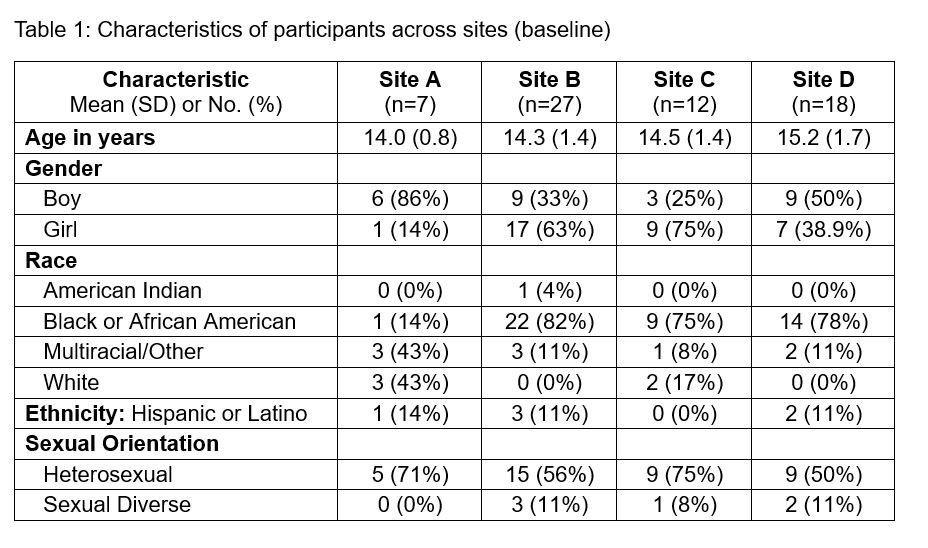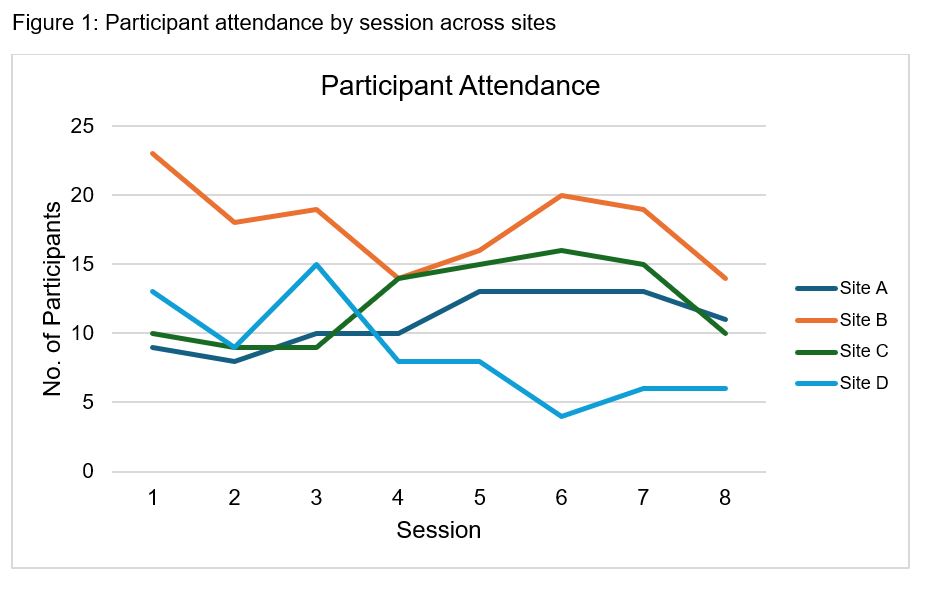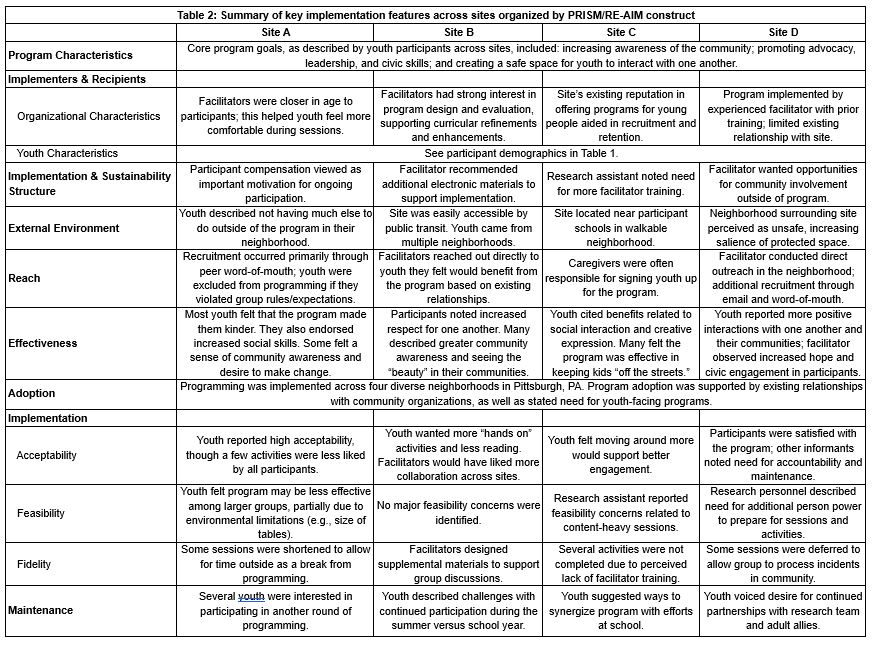Adolescent Medicine 5: Potpourri
Session: Adolescent Medicine 5: Potpourri
142 - Implementation evaluation of a multisite youth empowerment program
Monday, April 28, 2025
7:00am - 9:15am HST
Publication Number: 142.5279
- NS
Nicholas Szoko, MD, PhD (he/him/his)
Assistant Professor of Pediatrics
Washington University in St. Louis School of Medicine
Saint Louis, Missouri, United States
Presenting Author(s)
Background: Implementation and dissemination science (IDS), which studies factors influencing uptake, maintenance, and spread of evidence-based practices, has been applied widely in clinical settings. Fewer studies have used IDS to evaluate programs in the community, including those focused on youth leadership and empowerment.
Objective: We sought to apply a rigorous IDS framework to evaluate implementation of a multisite, community-based youth empowerment program.
Design/Methods: Youth Leadership in Action (YLIA+) is an eight-session youth empowerment program which was implemented with youth aged 13-18 across four neighborhood sites in Pittsburgh, PA from September 2023 to May 2024. YLIA+ was co-developed by researchers and community members and implemented by trained community facilitators. Sessions involved group activities and facilitated discussions related to identity, community, and empowerment. Research personnel were present at all sessions to track attendance, monitor fidelity, and administer surveys. After implementation, we conducted semi-structured interviews with 20 key informants (i.e., youth, facilitators, research personnel), which were audio recorded and transcribed. Using the Practical, Robust, Implementation and Sustainability Model (PRISM) and the Reach, Effectiveness, Adoption, Implementation and Maintenance (RE-AIM) framework, we performed directed content analysis on interview transcripts. Content was aggregated using a construct-by-facility matrix. Quantitative implementation data for each site was summarized with descriptive statistics, categorized by relevant PRISM/RE-AIM constructs.
Results: Participant characteristics, including age, gender, and racial/ethnic identity, varied across the four implementation sites (Table 1). Attendance remained stable over time at two sites and declined at the others (Figure 1). Most participants enjoyed YLIA+ (92%), learned new skills (92%), and were likely to recommend to a friend (87%). Across 25 program activities, fidelity was 76% for Site A, 88% for Site B, 68% for Site C, and 88% for Site D. Interviews revealed important implementation features across PRISM/RE-AIM constructs (Table 2). YLIA+ was effective in promoting leadership skills, community awareness, and social support among participants.
Conclusion(s): Using PRISM/RE-AIM, we highlight key factors related to implementation of a multisite youth empowerment program. Findings underscore the benefit of IDS for community-based interventions and support efforts for translatability and sustainability.
Table 1: Characteristics of participants across sites (baseline)

Figure 1: Participant attendance by session across sites

Table 2: Summary of key implementation features across sites organized by PRISM/RE-AIM construct


